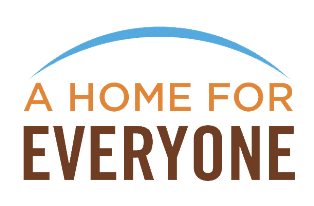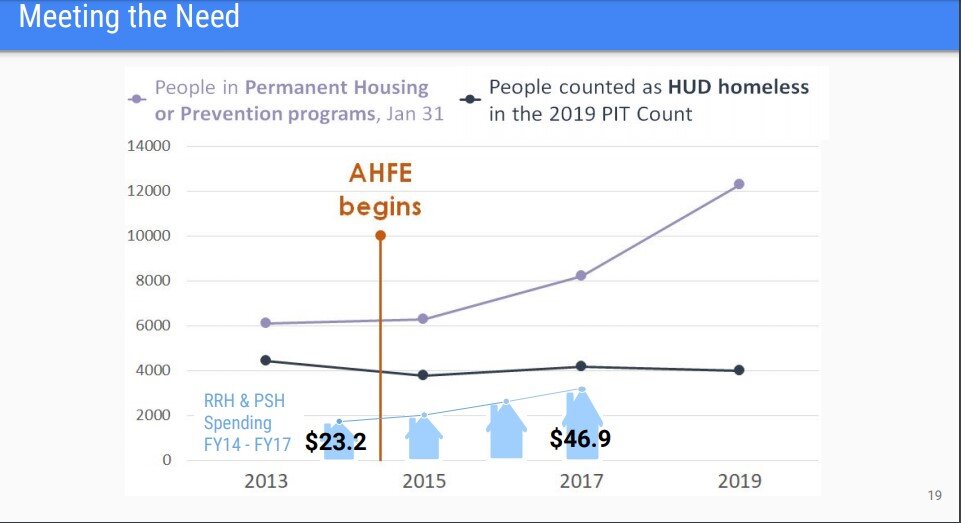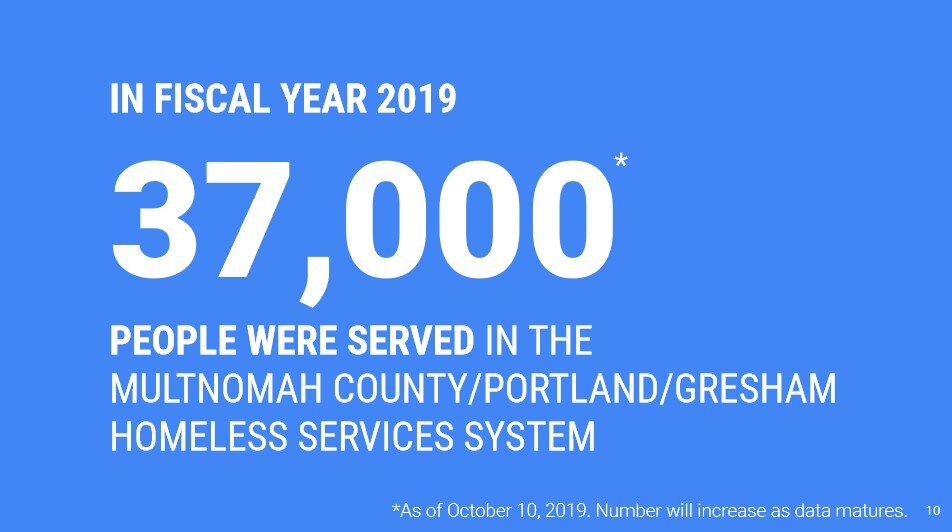For years, we’ve been deep in a homelessness crisis fueled by stagnant wages for low-income neighbors, increasing housing costs, decades of federal disinvestment, ongoing racial disparities, and the pain and trauma left by cycles of poverty.
Since early 2015 alone, rents in our community have risen much faster than the median income, to nearly $1,400 a month for a one-bedroom apartment in Portland, according to survey data from Multifamily NW from fall 2021. Meanwhile, more than 21,000 people in Multnomah County rely on federal disability checks that top out at $794 a month.
For minimum wage workers, rent increases since 2005 have cost thousands of dollars in real income and made it more difficult to tend to other basic needs. A broken-down car or a sudden medical bill isn’t just an inconvenience for neighbors in those straits. It’s lost income. It’s debt. And it’s potentially a path to unemployment and homelessness.
Housing prices are not only pushing people into homelessness, but they’re also making it harder to help people who’ve lost housing regain it.
That means it takes longer to get into housing. Which means it takes longer to move out of shelters. Which means it takes longer to get into shelter or to directly find another housing opportunity if you’re on the streets.
THE PAINFUL COSTS OF HOMELESSNESS
Homelessness is preventable. And it affects thousands of our neighbors, struggling with illness, isolation and addiction as they try to rebuild their lives.
These neighbors are adults, seniors, young people, couples and families with children. They are disproportionately people of color. They are living on the streets, either temporarily or for the long term, for a variety of reasons. They may be homeless because of a lost job, domestic violence, a physical disability, a drug addiction or an untreated mental illness.
They may be experiencing a financial crisis and have been evicted from their home for the first time; they may cycle from homelessness to housing and back to homelessness again; or they may be chronically homeless, having lived on the streets for many months or years.
And as we see every year in the community’s Domicile Unknown reports, some neighbors never escape homelessness.
Our most recent Point in Time survey shows where we are:
Overall, we counted just more than 4,000 people experiencing homelessness in Multnomah County — a figure that includes people in transitional housing, without shelter and in emergency shelter. That number is down slightly since 2017, but a larger share of people, more than 2,000, reported sleeping without shelter.
Communities of color continue to be overrepresented on our streets and in our shelters compared to Multnomah County’s overall population. Our whole community advances when we work to address and end these disparities.
And the number of people considered chronically homeless or who reported disabling conditions is climbing at a higher rate than the overall number of people experiencing homelessness.
Homelessness is also expensive for residents and businesses. It increases costs for health and mental health care, jails, public safety and schools. We save money and produce better outcomes when people have a place to call home.
BUILDING ‘A HOME FOR EVERYONE’
Our community has been fighting to end homelessness for years, helping tens of thousands of people into housing over the last decade. But with need increasing even faster, we’ve had to come together in new ways to keep hold onto the progress we’ve made.
In 2013, the city of Portland, Multnomah County and Home Forward convened a special committee that brought together diverse stakeholders to review data, listen to the community and learn from effective practices, locally and nationally.
Together, with other partners, they created A Home for Everyone: A United Community Plan to End Homelessness in Multnomah County.
A Home for Everyone is led by an executive committee made up of elected officials from Portland, Multnomah County and Gresham, Home Forward, along with providers, business leaders, and members of the faith and philanthropic communities.
The executive committee works with a diverse coordinating board and several policy-focused work groups whose members include people with lived experience and advocates whose housing work includes a focus on equity. Together, they set priorities and make recommendations on policies and spending by A Home for Everyone’s partners.
Partners in A Home for Everyone have stepped up and invested in that work, spending more than ever on a calibrated mix of strategies built on prevention, housing placements and shelter.
For example, when the City of Portland declared a housing emergency in fall 2015, the City and Multnomah County set aside an additional $20 million for homeless services combined. The City and County have spent even more since then.
CREATING A JOINT OFFICE OF HOMELESS SERVICES
Working through A Home for Everyone, Portland and Multnomah County also created a Joint Office of Homeless Services in July 2016 to combine their spending on services for people experiencing homelessness.
The City and County charged the Joint Office with supporting the A Home for Everyone initiative while also putting its priorities into place through the strategic investment of local funds. The Joint Office also works to simplify access to services for neighbors experiencing homelessness, and evaluates how well those services are working.
The Joint Office assembled expert staffers from the Portland Housing Bureau, the county’s Department of County Human Services and other partners into a single team.
The office is separate from A Home for Everyone. But part of its charge, in supporting A Home for Everyone, is staffing the workgroups that the initiative relies on to deliver on its promise of providing community-wide solutions for a community-wide crisis.
The Joint Office does not directly provide services. It administers contracts for services, conducts homeless street counts and one-night shelter counts, manages systems of care, and oversees system reporting and evaluation. It also writes proposals to, and monitors funds issued by, the U.S. Department of Housing and Urban Development’s Continuum of Care program.
SIGNS OF PROGRESS
The early data makes clear that our work is making a difference.
On any given night, more than 12,000 people are supported in their housing through the Joint Office of Homeless Services and its partners, support through rent assistance and other services that has either ended homelessness for thousands of people or prevented them from falling into it in the first place. That number is double what it was four years ago.
One analyst, ECONorthwest, concluded in 2018 that our region’s homelessness crisis would and should be worse than it is — based on income disparities, vacancy rates and housing costs — but for the investments and planning overseen by the Joint Office so far.
Thousands more people every year also now experience the basic safety of emergency shelter than before the A Home for Everyone initiative launched. That comes after seeing through a promise to double our community’s supply of publicly funded year-round beds.
And we continue to shift those new beds into dignified, purposed-designed shelter spaces that lower the barriers that once kept people from seeking shelter. In 2019 alone, we opened four new shelters — the Laurelwood Center, the Lilac Meadows family shelter and the Family Village Campus, all in Southeast Portland, and the Navigation Center in the Pearl District. Each 24-hour facility focuses on providing the intensive services that will navigate our most vulnerable neighbors into permanent, secure housing
We’ve also grown our approach to street outreach. In 2019, the Joint Office launched a new Navigation Team that works intensively with some of the most challenging encampments in the city.
Preventing homelessness is always our first priority. If that’s not possible, we work to get our neighbors back into housing as quickly as we can. But the reality is that can take time. So we’re also ready to provide emergency shelter as needed.
But we know we have more to do.
We all want to take care of our neighbors, including those who have temporarily fallen on hard times, but also those with long-term illnesses or disabilities who might struggle to care for themselves. And everyone benefits when fewer of our neighbors are living their private lives in public spaces.
We know what works. We know the difference having a home can make. We know the difference that even a safer night of sleep can make. We all have a stake in ensuring we keep our commitments to our neighbors and that we continue to make progress.





